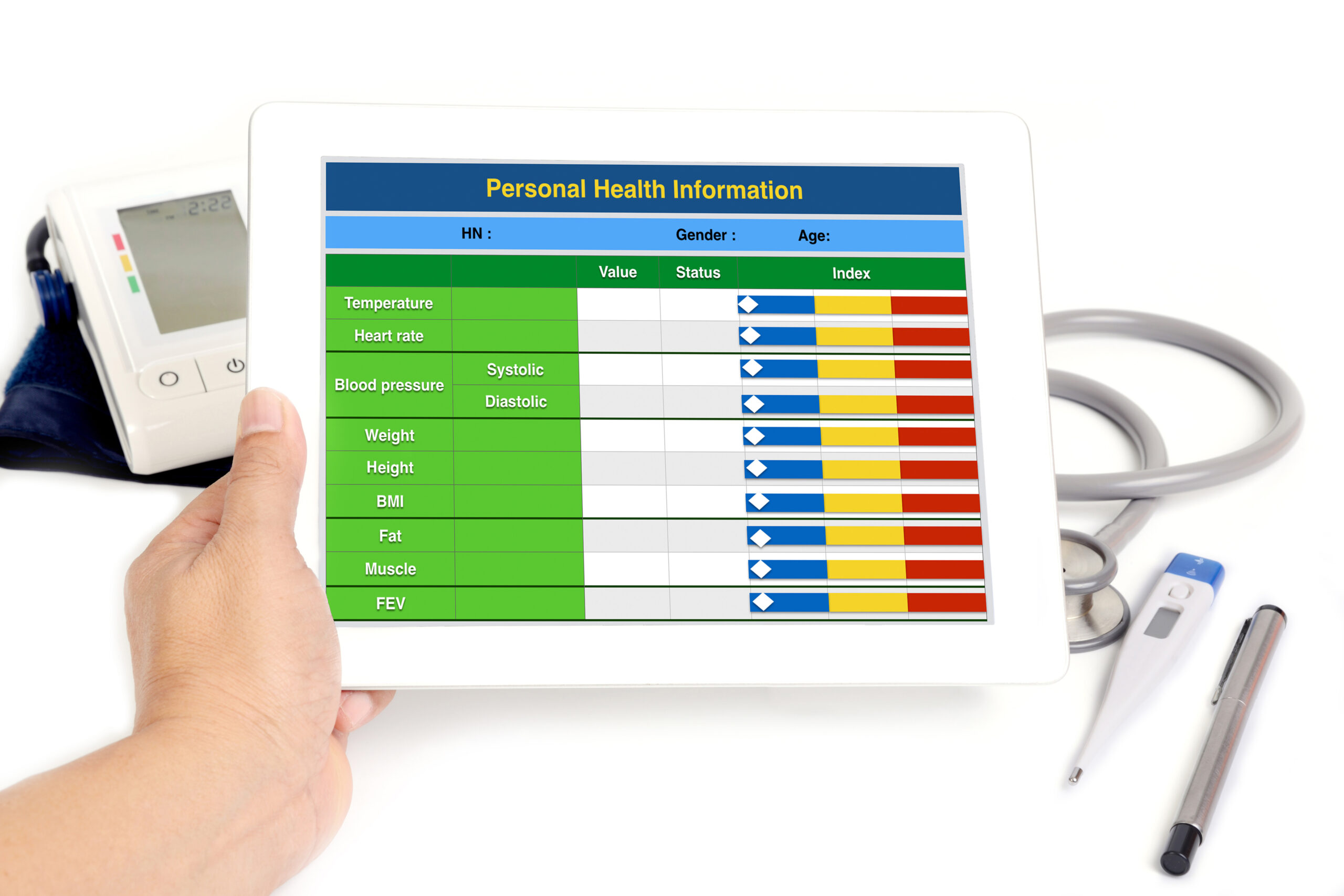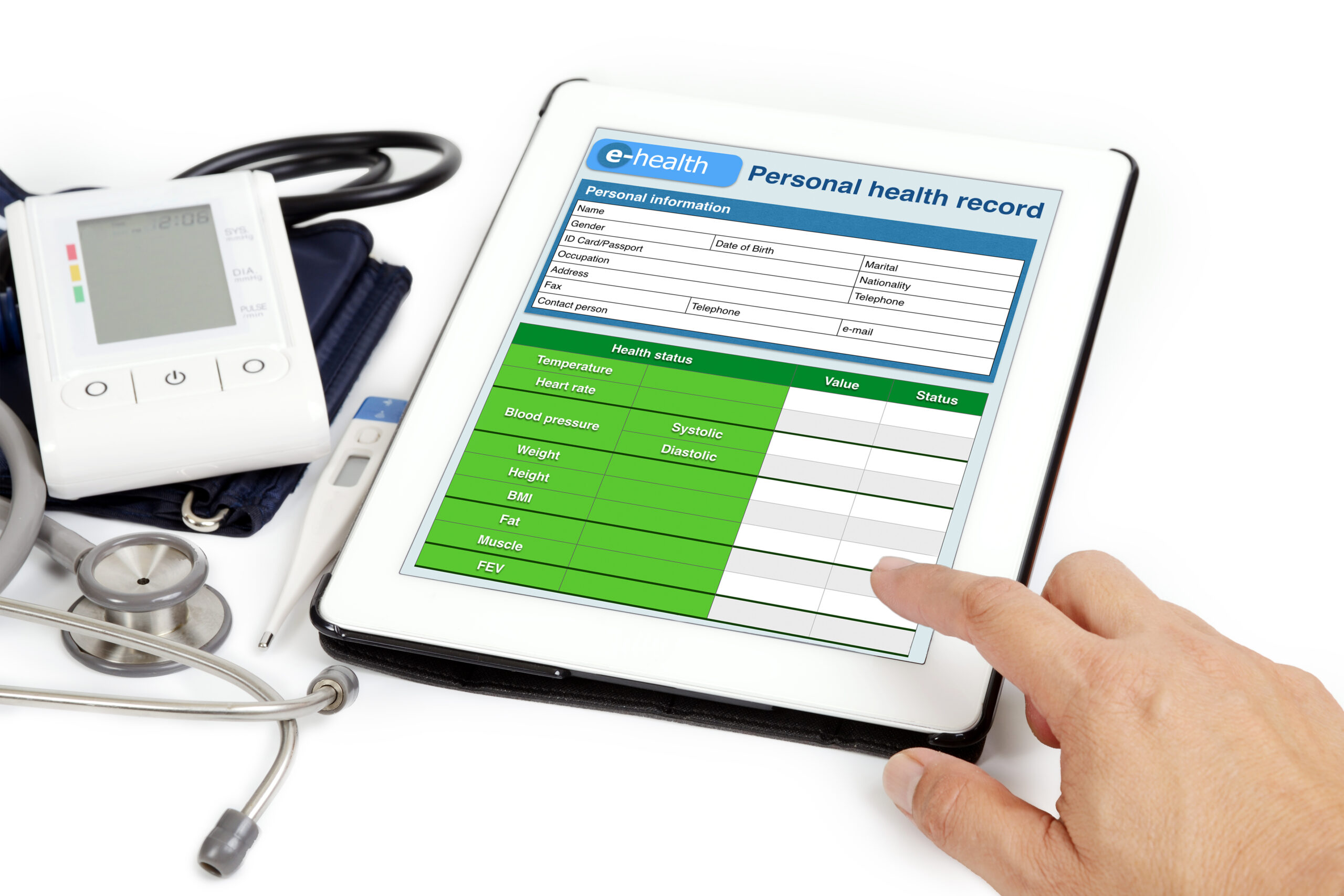RTHM will soon launch RTHM Direct – an easier way to access Long COVID treatments. Click here for early access.
Chances are your physician or other healthcare provider utilizes an electronic medical record (EMR) platform that stores some of your health information in one place. In most cases, these providers offer patient portals that allow you to view health records, summaries of visits, test results, and your current medication list. But what if you see multiple providers? Unfortunately, not every provider uses the same EMR, meaning that sharing data and creating a comprehensive health profile can often be difficult. This is especially true for those with complex, chronic health conditions who see many different specialists. If this is the case, creating your own health summary, also known as a personal health record, can help streamline your care and, in some cases, even save your life.
What Is a Personal Health Record (PHR)?
A personal health record (PHR) is a collection of all your medical records and information in one place. Maintaining a PHR not only allows you to better track your health but also provides a comprehensive look at your current healthcare when you see different providers. For example, having a health summary can show a new provider that the test they want to order was already performed last week by another provider and you already have the results. A health summary also allows you to provide at-home medical information such as tracking your blood sugar or blood pressure. Another important part of your PHR, for example, can include an activity tracker (link to activity tracker blog post) that shows daily activities and symptoms to better provide information to a new provider.
But a personal health record isn’t only a benefit for your providers. In fact, maintaining a personal health record helps improve patient-provider relationships, increases individual patient empowerment, and helps to enhance your overall medical care.
For a quick overview of a PHR, watch this video.
Creating a Health Snapshot Sheet
If you are new to a chronic illness, it may be overwhelming to create a comprehensive health summary binder right away. In this case, a simple health summary sheet is the best place to start. This sheet includes everything from your contact information to your medical history and current medications. This single sheet provides a snapshot of your current health status that you can share when you see a new provider. Please check out our blog “Creating a Health Snapshot Sheet” for detailed information on creating this sheet, as well as example sheets you can print out and use.
How Do You Maintain a Comprehensive Personal Health Record?
Creating a Personal Health Record (PHR) can be done in several ways, each with its own advantages and considerations:
- Paper-Based PHR: This is the traditional method, where you keep a physical binder or folder with all your health records. It’s simple and doesn’t require any technical knowledge. However, it can be cumbersome to manage, especially if you have a lot of records. It’s also susceptible to physical damage or loss. A paper-based PHR can be as simple as a binder with information printed from your patient portals to more in-depth information you write out and create. In addition, you can find many PHR page templates online for free. HERE is an example.
- Digital Document PHR: This involves keeping your health records in digital formats, such as Word documents, Google Doc, Apple Notes, or PDFs, on your computer or a portable storage device. This method is more compact and easier to organize than a paper-based health summary. It also allows for easy sharing of records. However, your records could be lost if your device is damaged or stolen unless you regularly back up your data.
- Health Apps: There are numerous health apps available that allow you to maintain a PHR on your smartphone or tablet. In fact, one may already be built-in to your mobile device, such as Apple Health Records. These apps are typically user-friendly and offer features like reminders, charts, and the ability to share records electronically. They also allow you to access your PHR anytime, anywhere. However, they may require a learning curve to use effectively and there could be concerns about data privacy and security.
- Web-Based PHR Platforms: Some healthcare providers offer web-based platforms where you can maintain a PHR. These platforms are typically secure and may be integrated with the provider’s own record-keeping systems, allowing for seamless sharing of information. However, access to your records may be limited if you change healthcare providers.
- Hybrid Systems: Some people opt for a hybrid system, where they maintain a paper-based health summary for key documents and use digital methods for day-to-day tracking and updates.
In choosing a method for creating a PHR, consider factors like ease of use, accessibility, security, and how comfortable you are with technology. The best method is the one that you find most convenient and are likely to use consistently.
Main Components of a Comprehensive PHR
Your personal health record (PHR) is an organized system for storing health information, including illnesses, hospitalizations, encounters with healthcare providers, medications, immunizations, allergies, and lab and test results. By maintaining a comprehensive PHR, you can play a more active role in your healthcare, facilitating better communication with your healthcare providers and enabling more informed decision-making. Here is just some of the basic information that should be included in your personal health record.
- Basic Contact Information: This includes your name, date of birth, address, and contact number. It’s essential for identification and communication purposes, especially if you suffer a medical emergency and are unable to share information directly with medical professionals.
- Emergency Contacts: List the names, relationships, and contact numbers of individuals to be contacted in case of an emergency.
- Individual Medical History: This includes past and current diagnoses, previous surgeries, and past medical conditions. It provides a historical overview of your health. Keep this information readily available as it is a quick snapshot of other, more comprehensive pages within your health summary.
- Family Medical History: Information about the health of your immediate family members can help identify if you’re at risk for certain genetic conditions. This would include parents, grandparents, aunts, uncles, and siblings.
- Current Medications and Supplements: List all the medications and supplements you’re currently taking, including their dosages and frequency. Additional information, such as a prescribing physician, physical description of the medication, and what symptoms the medication treats can also be beneficial.
- Current Treatment Plans: This includes any ongoing treatments or therapies, their schedules, and the healthcare providers involved. If you have regular treatments, such as physical therapy or infusions, it is a good idea to create a treatment calendar by month so you not only make all appointments but can be crucial in a medical emergency. For example, if you suffer from an allergic reaction a few hours after a new infusion treatment, emergency providers can see your recent treatment.
- Allergies: Document any known allergies to medications, food, or environmental factors, along with the reactions they cause. This can be critical information in a medical emergency. If you experience anaphylaxis, it is important to also wear some type of allergy alert bracelet or something similar.
- Provider Contact List: This is a list of all your healthcare providers, including their specialties, contact information, and the reason for their involvement in your care.
- Latest Test Results: Keep a record of recent lab or diagnostic test results for reference and to track progress over time. You can often print lab reports from your provider portal to keep within your personal health record.
- Symptom Tracker: Symptom tracking is the process of regularly recording any symptoms you experience, with the aim of monitoring changes over time. This can be particularly useful for individuals managing chronic illnesses, as it can help identify patterns, triggers, and the effectiveness of treatments. To learn more about symptom tracking, read our blog “How to Create a Symptom and Activity Tracker.”
- Insurance Information: This includes your insurance provider, policy number, and coverage details. It’s useful for billing and reimbursement purposes.
- Immunization Records: Keep a record of all your vaccinations, including the dates they were given.
- Legal Documents: This includes documents like a living will, a durable power of attorney for health care, or any other legal health directives.
By maintaining these components in your PHR, you can ensure that you have all the necessary information at your fingertips to make informed decisions about your healthcare and effectively communicate with your healthcare providers.
Update Your Personal Health Record Often
Keeping your PHR up to date is of paramount importance for several reasons. An updated PHR ensures that the most accurate and current information is available for making healthcare decisions, thereby preventing potential medical errors such as inappropriate medication prescriptions or overlooked tests. It facilitates effective communication with healthcare providers, enabling them to make accurate diagnoses and develop effective treatment plans based on the most recent health data.
In emergency situations, an up-to-date PHR can provide vital information to medical personnel, potentially saving lives. Furthermore, if you change healthcare providers, a current PHR gives the new provider a comprehensive view of your health history. Lastly, an updated PHR aids in the self-management of your health, allowing you to track symptom changes, treatment effectiveness, and progress toward health goals.
RTHM providers and support team members understand the importance of maintaining a personal health record. If you have any questions or concerns when it comes to your PHR, join the RTHM Community where you can interact with others living with complex illnesses as well as RTHM team members who can help answer your questions. Join the RTHM Community HERE.

Get updates
Join our mailing list



